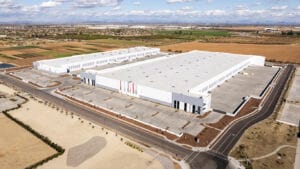The construction industry is huge, as old as the world, and consumes up to 10% of all money used in the world. On average, it can be considered that every tenth able-bodied person in the world is somehow connected with the construction industry.
It is partly the driver of the economy, many internal processes are tied to it. And although the construction sector adjusts rather than influences the development of our lives, the contribution of this industry to the development of social processes cannot be underestimated.
But there is an issue: even before COVID-19, the performance of the construction industry was poor compared to other sectors of the economy. In terms of the level of digitalization, only comrades working in the agricultural industry stand behind the builders. We asked a dedicated development team about the best practices on how to improve construction site management, and are ready to share some ideas. Check out how to make the business more efficient, profitable and safe for the employees.
Construction Main Site Management Challenges
Stagnant productivity, low data digitization, and low profitability (2–10% in developed countries, and 15–30% in developing countries) have plagued the construction industry for many years. Intelvision’s specialists have summarized more challenges in the sector that can be partially or completely solved with the help of IT.
Intelvision is a custom software development company that offers full-cycle web development services, paying particular attention to performance and security. Its specialists stick to a set of values and high standards that lead to out-of-this-world outcomes for the business.
Poor Productivity & Bad Hazard Management
One of the major challenges is that the construction sector faces a low level of productivity in comparison to other industries. At the same time, 78% of engineering and construction companies are sure that the risks have increased several times.
Poor Communication
Poor communication in the construction industry is one of the major contributors to project delays. In projects with minimally effective communications, only 37% of the projects were completed on time, only 48% were completed within budget and just 52% met their original goals.
Scattered Data & Ignoring Big Data Technologies
Over the past decades, the amount of data used in planning has grown like an avalanche, while incoming data is not processed as well as rarely systematized, and lost forever on local disks.
Long-Awaited Update and Features in the Construction Industry
Technologies allow contractors and PMs to make more timely and informed decisions based on cost and labor data. Moreover, construction software development makes it easier to collaborate more quickly and effectively and improves safety at the construction site.
Large construction companies that won’t use BIM and the right automation tools shortly (BIM in construction has demonstrated the ability to save up to 20% of construction project costs) in their work will be forced to leave the market during the next crisis. A similar condition will be put forward for the companies that will not think about using big data, data analysis, and machine learning in their work after the COVID-19.
Tips for a Better Construction Site Management
Unfortunately, the construction industry is more complex than banking (100x) or autonomous cars (10x), so the use of big data and machine learning in construction project planning that could give a new impetus to the industry is still a long way off. However, you can start improving business processes and performance right now, to stay one step ahead of the competition. We’ve prepared a few construction project management tips that help you to transform your business.
1. Start with safety concerns
Safety is the number one concern in most construction projects, as construction is the most dangerous industry for workers. The site should be inspected regularly for new or recurring safety concerns.
Properly training your workers is the easiest way to help improve your company’s safety culture. It also shows your employees that you are interested in keeping them safe and healthy.
Technology implementation will also lend a hand to the construction industry when it comes to site safety. For example, GPS tracking will show exactly where your team is. Historical tracking helps to see detailed trip replays and previous events. Live streams—to monitor events in real-time.
2. Share the construction project mission and goals
The team must understand that everyone is sailing on the same ship, and you have a common goal—to move forward. Therefore it’s important to share your goals, plans, and results.
Create a chat “What are you working on?”. Let everyone write once a week about what they did last week and what they are going to do next. Don’t see this as an attempt to evaluate, control, or coordinate a team. The purpose of the discussion is to create the feeling that you are all on the same ship, not on separate boats.
3. Share everything
Everyone on the team should have access to all work information and software. Use single cloud storage for all files, to-do lists, and calendars.
4. Use task and time trackers
Many online services help keep things in order, organize teamwork and track the status of tasks. They will also help a project manager work more efficiently since it isn’t easy to properly allocate time if you keep all the meetings and tasks in your head.
5. Embrace Automated Reporting Systems
Construction project managers often reply to hundreds of emails a day and use the phone to call and address every question about budgets and project progress. However, you can cut down further correspondence by implementing automated reporting systems.
It will ensure the right reports go to the right people on time, allowing you to focus on other tasks and communication. Other reporting systems, such as safety and health management, can prevent hazards, and track incidents.
Finally, get together as a team to celebrate the successes. It will help increase the employee motivation level—and this ultimately brings companies 2.5 times more profit than businesses with a low motivation score. As a result, high team motivation can lead to higher retention rates. This way you won’t need to spend additional expenses on hiring, extensive training, and onboarding new employees, but rather focus on something more important while cohesive project teams get the job done.
Conclusion
It will take many more years for the construction industry to catch up with the level of automation that, for example, mechanical engineering has already reached today. But the fundamental changes in business processes are already critically needed in 2022. Those construction companies and agencies that have managed to transform the business before the others will remain on the market.




